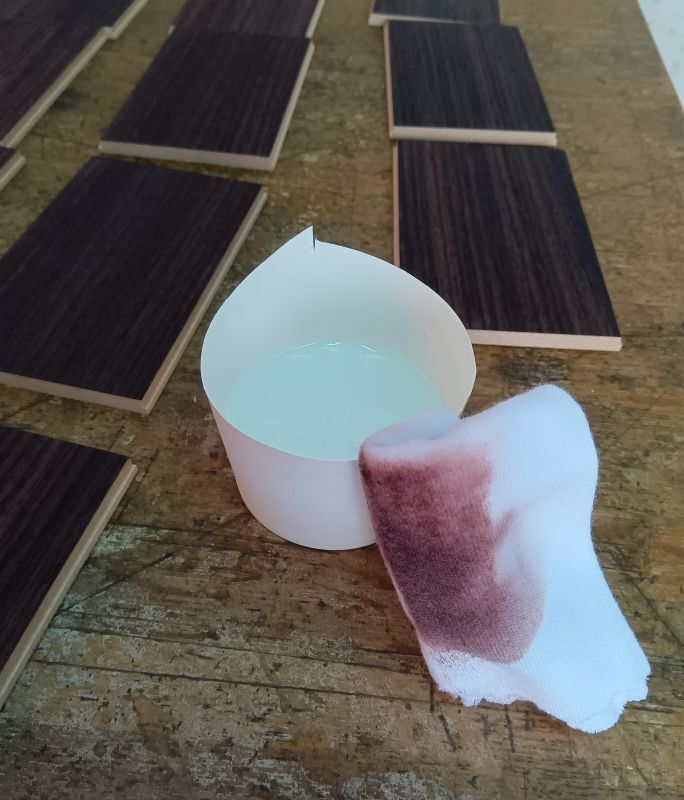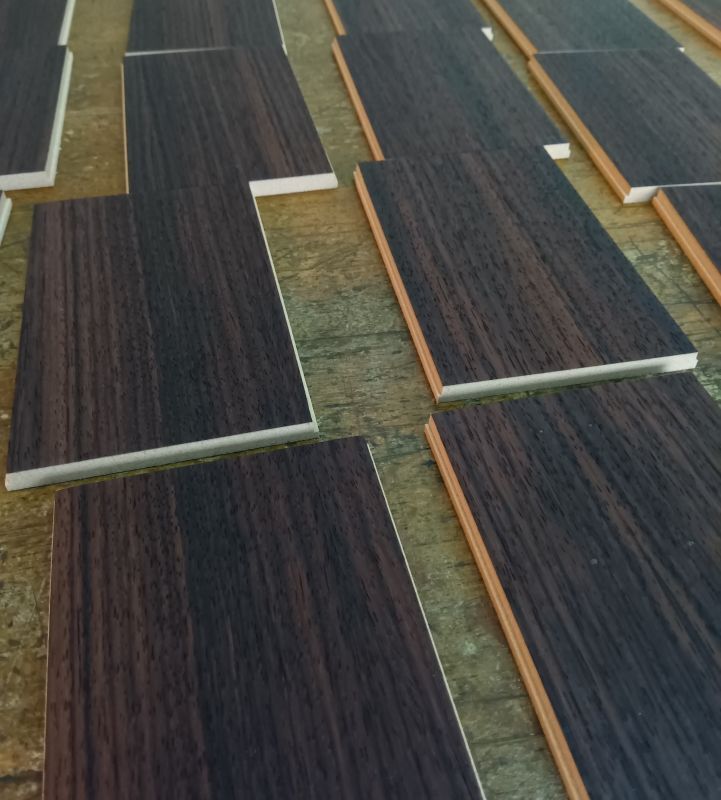Lid panel of drawer
This is the process for making the lid panels of a drawer. This drawer is for a 5 sun 10 steps box. I paste the sliced wood sheet onto an MDF board, cut it to size, and create the steps (gap) to slide into the groove.
The lid is now complete, but I would like to apply a bit of paint just to the surface of the lid panel. The drawers that are set inside are usually not painted. However, when you open the lid (by pulling it out), you have to press down on the top of the lid, so it gets dirty over time because that part is pressed a little harder. So, I apply a thin coating to make the surface stronger. The photo shows the work.
The wood used (sliced) this time is Rosewood. Depending on the availability of sliced wood, I use walnut, rosewood, nyatoh, etc. The paint used is a two-component urethane coating. This is a paint that hardens when you mix two liquids together. It's the same type of paint usually used on the surface of Japanese puzzle boxes. I can choose the glossiness of the paint, and I use a matte finish.
I apply the paint once or twice using a cloth like the one in the photo. This painting method is called "Tanpo-nuri" in Japan. More precisely, there is a formal way to make the cloth rounder (this is called "tanpo"). However, because there are few boards to work on, my way is a little casual😅.
This method is relatively easy and there is little chance of failure (such as uneven paint application), so it is recommended if you are painting something like a box or a small item. The downside is that the paint film is thin and does not adequately protect the work from humidity, heat, etc. However, I think it is very good for preventing dirt. The color of the wood becomes darker and more beautiful!
The lid is now complete, but I would like to apply a bit of paint just to the surface of the lid panel. The drawers that are set inside are usually not painted. However, when you open the lid (by pulling it out), you have to press down on the top of the lid, so it gets dirty over time because that part is pressed a little harder. So, I apply a thin coating to make the surface stronger. The photo shows the work.
The wood used (sliced) this time is Rosewood. Depending on the availability of sliced wood, I use walnut, rosewood, nyatoh, etc. The paint used is a two-component urethane coating. This is a paint that hardens when you mix two liquids together. It's the same type of paint usually used on the surface of Japanese puzzle boxes. I can choose the glossiness of the paint, and I use a matte finish.
I apply the paint once or twice using a cloth like the one in the photo. This painting method is called "Tanpo-nuri" in Japan. More precisely, there is a formal way to make the cloth rounder (this is called "tanpo"). However, because there are few boards to work on, my way is a little casual😅.
This method is relatively easy and there is little chance of failure (such as uneven paint application), so it is recommended if you are painting something like a box or a small item. The downside is that the paint film is thin and does not adequately protect the work from humidity, heat, etc. However, I think it is very good for preventing dirt. The color of the wood becomes darker and more beautiful!

